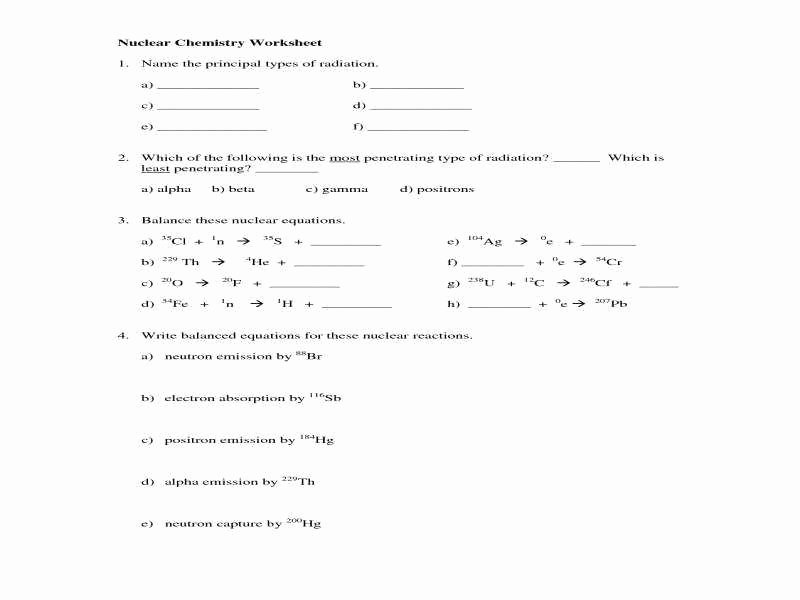

Thus, if you split a nucleus that is much larger than iron into smaller fragments, you will release energy because the smaller fragments are at a lower energy than the original nucleus. and study workbook chapter 21 answer key, chapter 10 nuclear chemistry section 10 4 fission and fusion, section 25 1 nuclear radiation pages 799802. It turns out that the most tightly bound atomic nuclei are around the size of iron-56. If a nuclear reaction produces nuclei that are more tightly bound than the originals, then the excess energy will be released. This excess mass was converted to energy. The Coulomb energy increases,but its influence is smaller. In proton-proton fusion the final helium-4 atom weighs less than the original four hydrogen atoms that fused together. Tina Potter FissionReactorsFusionNucleosynthesisSolar neutrinos Most stable form of matter at A60 Fusion occurs because the twolow A nuclei have too large asurface area for their volume.The surface area decreases when they amalgamate. These questions will give you some simple practice in handling the ideas and calculations that physicists meet in nuclear fission.

The key is in how tightly the nucleons are held together in a nucleus. Fission and Fusion Particle and Nuclear Physics Prof. Nuclear fission is a process in which a nucleus splits into two smaller nuclei. Give students five minutes to jot down answers to the following questions. #""_5^10"B" + _2^4"He" → _7^13"N" + _0^1"n" # + energy The main difference between these two processes is that fission is the splitting of an atom into two or more smaller ones while fusion is the fusing of two or more smaller atoms into a larger one. Nuclear Fusion and Fission: Think Nucleus Rubrics student handout. Nuclear fusion is a process in which two nuclei join to form a larger nucleus. Nuclear fission, fusion, and decay all primarily involve changes to the composition of the nucleus of the atom, so students will be able to apply what they. 12 protons, 12 electrons, 13 neutrons 17 protons, 17 electrons, 20 neutrons 53 protons, 53 electrons, 78 neutrons 92 protons, 92 electrons, 146 neutrons Q10.1. Both fission and fusion occurs to draw nearer the maximum stability of Fe-56. This phenomenon is known as iron peak.Fusion and fission are similar in that they both release large amounts of energy. Questions 10.1: Nuclear Radiation (click here for solutions) Q10.1.1 Write the symbol for the isotope described. Kindly say, the Nuclear Fission And Fusion Worksheet Answers is universally compatible with any devices to read Physics of the Future - Michio Kaku Imagine, if you can, the world in the year 2100. Fusion of nuclei with lower mass than iron releases energy while fusion of nuclei heavier than iron generally absorbs energy.

/fission-of-a-uranium-nucleus-141483757-579266b03df78c173498d794.jpg)
The reaction is followed either by a release or absorption of energy. Nuclear fusion is the joining of two nuclei to form a heavier nuclei.


 0 kommentar(er)
0 kommentar(er)
